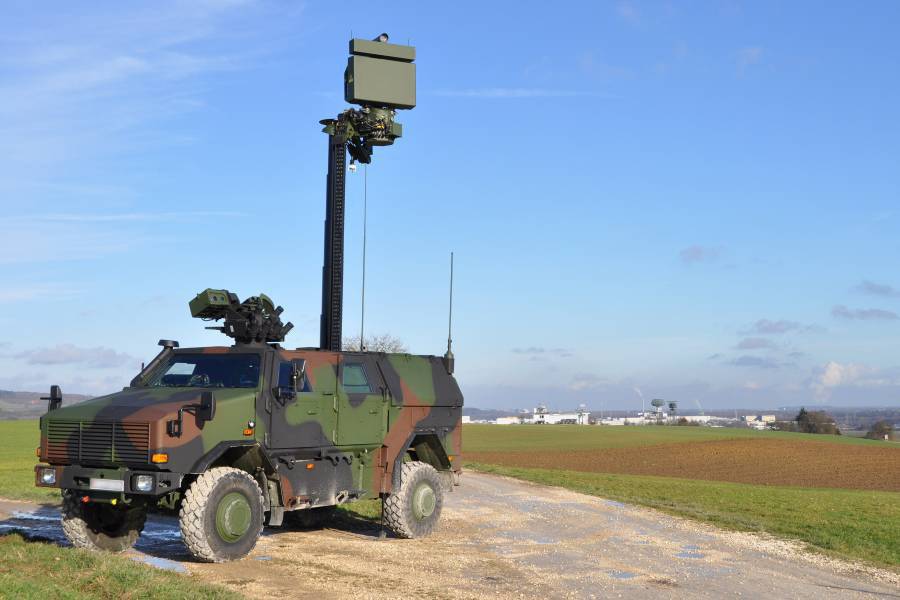The global military radar market was worth USD 35.58 billion in 2023 and is expected to grow significantly in the coming years. By 2024, it is projected to reach USD 46.07 billion and continue expanding to USD 211.12 billion by 2032, with an annual growth rate of 20.96%. North America led the market in 2023, holding a 38.28% share. The U.S., in particular, is expected to see substantial growth, with its military radar market reaching approximately USD 63.69 billion by 2032. This growth is driven by increased military purchases and long-term defense agreements.
Military radar is a crucial technology used by armed forces worldwide for surveillance, target detection, navigation, and combat operations. It operates by emitting radio waves and analyzing the reflected signals from objects, enabling the identification, location, and tracking of various targets, including aircraft, ships, vehicles, and missiles. The development of radar technology has significantly transformed military operations, offering enhanced situational awareness and improved decision-making capabilities on the battlefield.
The origins of radar date back to the early 20th century
With significant advancements occurring during World War II. Initially developed for naval applications, radar technology quickly expanded to air and ground operations. Early radar systems used simple pulse techniques to detect objects at a distance, but innovations in signal processing, antenna design, and frequency modulation have led to the sophisticated radar systems employed today.

Military radar can be categorized into several types based on its operational purpose and frequency range.
Airborne radar systems, typically mounted on aircraft, are designed for detecting and tracking aerial threats. Ground-based radar systems are used for air defense, providing early warning of incoming threats and enabling timely responses. Naval radar systems are crucial for maritime operations, allowing ships to detect other vessels, navigate safely, and monitor potential threats in the surrounding waters.
One of the key advantages of military radar is its ability to operate in various weather conditions and at night, providing continuous surveillance capabilities. Modern radar systems utilize advanced technologies such as phased array antennas and synthetic aperture radar (SAR) to enhance detection capabilities. Phased array radar employs multiple antennas to electronically steer the radar beam. Allowing for rapid scanning of large areas without the need for physical movement. SAR, on the other hand, uses high-resolution imaging techniques to create detailed maps of the terrain. Which can be invaluable for reconnaissance and intelligence-gathering missions.
In addition to traditional radar systems, military forces are increasingly adopting integrated radar solutions that combine multiple sensing modalities. These systems offer a comprehensive understanding of the operational environment by integrating radar data with information from other sensors. Such as electro-optical and infrared systems. This multi sensor approach enhances target identification and classification, allowing for more effective engagement strategies.
Electronic warfare (EW) has also become a critical aspect of military radar operations.
EW encompasses various tactics aimed at disrupting or deceiving enemy radar systems while protecting friendly assets. Techniques such as jamming, spoofing, and anti-radiation missiles are employed to counteract radar threats. As adversaries develop countermeasures against radar, military forces must continuously innovate to maintain their technological edge.
The advancement of radar technology has also led to the emergence of counter-radar measures, such as stealth technology. Stealth aircraft and vessels are designed to minimize their radar cross-section, making them harder to detect by traditional radar systems. This ongoing arms race between radar technology and countermeasures underscores the dynamic nature of military operations and the importance of research and development in maintaining operational superiority.
In recent years, the integration of radar with artificial intelligence (AI) and machine learning (ML) has gained attention as a means of enhancing radar capabilities. AI algorithms can analyze vast amounts of radar data in real time, improving target recognition and tracking accuracy. This integration allows military forces to make faster and more informed decisions, increasing operational efficiency and effectiveness.
The use of military radar is not limited to offensive operations. It also plays a vital role in defense and humanitarian missions. For example, radar systems are employed in missile defense systems to detect and intercept incoming threats, protecting vital assets and populations. Additionally, radar can use in disaster relief operations. Aiding in search and rescue efforts by detecting signals from survivors in challenging environments.
As military operations become increasingly joint and multinational, radar interoperability has become a key consideration. Different branches of the armed forces and allied nations rely on compatible radar systems to share information and coordinate responses effectively. Standardization of radar protocols and data formats is essential for ensuring seamless communication among various forces during joint operations.
Ethical considerations surrounding military radar technology are also gaining attention. The use of radar for surveillance raises questions about privacy and civil liberties, especially in domestic contexts. Balancing national security interests with individual rights is a complex challenge that requires careful consideration of legal and ethical frameworks.
In conclusion, military radar is a pivotal technology that has evolved significantly over the decades, shaping modern warfare and defense strategies. Its ability to provide real-time situational awareness. Detect threats, and support various military operations makes it indispensable for armed forces globally. As technology continues to advance. Military radar systems will likely become even more sophisticated, integrating new capabilities. Such as AI and multirole functionalities while navigating the challenges posed by countermeasures and ethical considerations. The future of military radar will undoubtedly play a crucial role in shaping the landscape of national defense and security.

